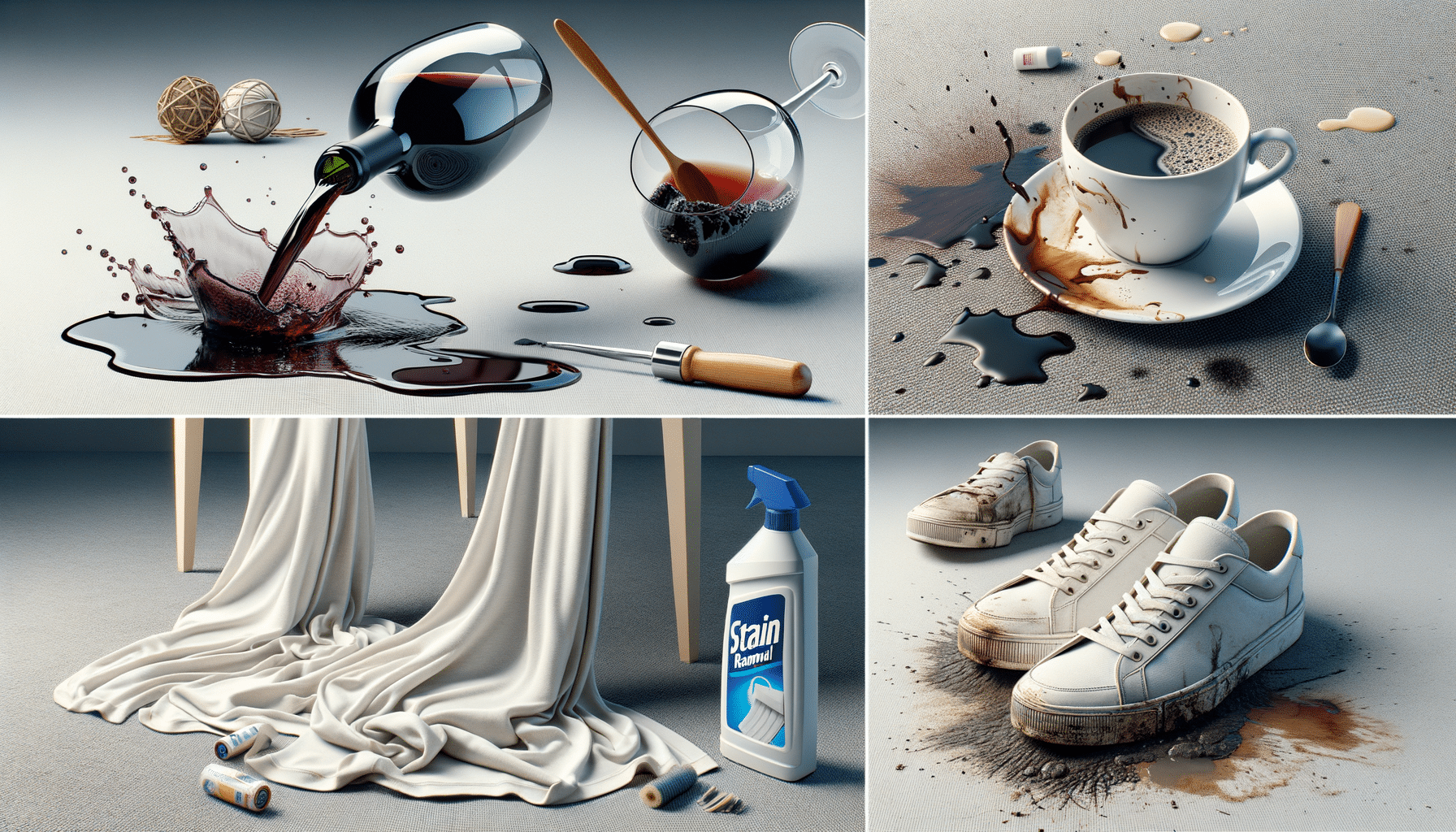Easy Strategies for Tackling Everyday Stains
Stains, from coffee to grass, are inevitable. Understanding how to deal with them, depending on the fabric and type of stain, can simplify the cleaning process and help preserve your cherished belongings.

Understanding the Nature of Stains
Stains are an unavoidable part of life, whether they come from a spilled cup of coffee or a muddy trek through the park. Understanding the nature of stains is the first step in effectively dealing with them. Stains are essentially substances that adhere to a surface, often altering its appearance and sometimes its texture. They can be classified into various types based on their composition, such as protein-based stains (like blood or sweat), tannin stains (like tea or wine), and oil-based stains (such as grease or makeup).
Each type of stain requires a specific approach for removal. For instance, protein-based stains often require cold water treatment, as hot water can set the stain, making it more difficult to remove. Tannin stains, on the other hand, can usually be treated with a mild detergent and warm water. Recognizing the type of stain you’re dealing with is crucial for selecting the appropriate cleaning method.
Moreover, the surface or fabric affected by the stain plays a significant role in determining the removal technique. Delicate fabrics may require gentler solutions, while more robust materials might withstand stronger cleaning agents. By understanding the nature of stains, you can tailor your approach to effectively tackle them without damaging your belongings.
Immediate Actions: The Power of Quick Response
When it comes to stains, time is of the essence. The quicker you act, the better your chances of successful removal. Immediate action can prevent the stain from setting into the fabric, making it much easier to clean. Start by blotting the stain with a clean, dry cloth to absorb as much of the substance as possible. Avoid rubbing, as this can push the stain deeper into the fibers.
For liquid stains, such as wine or juice, sprinkling a generous amount of salt can help absorb the moisture and prevent the stain from spreading. For oil-based stains, applying baking soda can be effective in drawing out the oil. These quick fixes can be lifesavers, especially when you’re on the go and don’t have access to cleaning supplies.
Remember, the goal of immediate action is to minimize the stain’s impact until you can properly treat it. While these methods might not completely remove the stain, they can significantly reduce its severity, making it easier to deal with later.
Proven Home Remedies for Common Stains
Home remedies have stood the test of time for a reason—they work. Many common household items can double as effective stain removers. For instance, white vinegar is a versatile solution that can tackle a variety of stains, from coffee to grass. Its acidic nature helps break down the stain, making it easier to lift from the fabric.
Baking soda is another household staple known for its stain-fighting properties. Its mild abrasive nature makes it suitable for scrubbing away stubborn stains without damaging the fabric. Simply mix it with a bit of water to form a paste and apply it to the stain. Let it sit for a few minutes before rinsing.
For ink stains, rubbing alcohol can be a lifesaver. Dab a small amount onto a cotton ball and gently blot the stain. The alcohol helps dissolve the ink, making it easier to remove. These home remedies are not only cost-effective but also readily available, making them a practical choice for everyday stain emergencies.
Commercial Stain Removers: When and How to Use Them
While home remedies can be incredibly effective, sometimes a commercial stain remover is necessary for tougher stains. These products are specifically formulated to tackle a wide range of stains and can be a valuable addition to your cleaning arsenal. However, it’s important to use them correctly to avoid damaging your fabrics.
Before applying any commercial stain remover, always test it on an inconspicuous area of the fabric to ensure it doesn’t cause discoloration or damage. Follow the instructions on the label carefully, as different products have specific usage guidelines. Some may require you to let the product sit for a certain period, while others might need to be rinsed immediately.
Commercial stain removers are particularly useful for stubborn stains like ink, oil, or red wine that might not respond well to home remedies. They often contain powerful enzymes or chemicals designed to break down the stain molecules, making them more effective for severe cases. By understanding when and how to use these products, you can enhance your stain-fighting efforts while preserving the integrity of your fabrics.
Preventive Measures: Keeping Stains at Bay
Prevention is always better than cure, and this holds true for stains as well. By taking a few precautionary measures, you can significantly reduce the likelihood of encountering stains in the first place. One effective strategy is to apply a fabric protector spray to your upholstery and clothing. These sprays create a barrier that repels liquids and prevents stains from penetrating the fibers.
Another preventive measure is to establish a routine cleaning schedule. Regularly vacuuming your carpets and upholstery can prevent dirt and debris from accumulating, which can lead to stains over time. Additionally, promptly cleaning up spills as soon as they occur can prevent them from setting in.
Educating yourself and others in your household about proper stain prevention techniques can also be beneficial. Simple habits, like using coasters for drinks or removing shoes before entering the house, can go a long way in keeping stains at bay. By adopting these preventive measures, you can maintain the cleanliness and appearance of your home, reducing the need for extensive stain removal efforts.